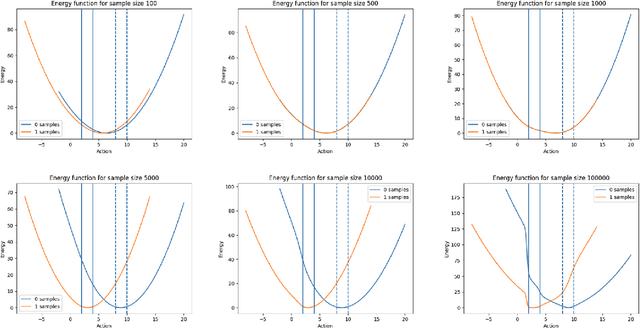Adam Elwood
Contemplative Wisdom for Superalignment
Apr 21, 2025Abstract:As artificial intelligence (AI) improves, traditional alignment strategies may falter in the face of unpredictable self-improvement, hidden subgoals, and the sheer complexity of intelligent systems. Rather than externally constraining behavior, we advocate designing AI with intrinsic morality built into its cognitive architecture and world model. Inspired by contemplative wisdom traditions, we show how four axiomatic principles can instil a resilient Wise World Model in AI systems. First, mindfulness enables self-monitoring and recalibration of emergent subgoals. Second, emptiness forestalls dogmatic goal fixation and relaxes rigid priors. Third, non-duality dissolves adversarial self-other boundaries. Fourth, boundless care motivates the universal reduction of suffering. We find that prompting AI to reflect on these principles improves performance on the AILuminate Benchmark using GPT-4o, particularly when combined. We offer detailed implementation strategies for state-of-the-art models, including contemplative architectures, constitutions, and reinforcement of chain-of-thought. For future systems, the active inference framework may offer the self-organizing and dynamic coupling capabilities needed to enact these insights in embodied agents. This interdisciplinary approach offers a self-correcting and resilient alternative to prevailing brittle control schemes.
A survey and taxonomy of loss functions in machine learning
Jan 13, 2023



Abstract:Most state-of-the-art machine learning techniques revolve around the optimisation of loss functions. Defining appropriate loss functions is therefore critical to successfully solving problems in this field. We present a survey of the most commonly used loss functions for a wide range of different applications, divided into classification, regression, ranking, sample generation and energy based modelling. Overall, we introduce 33 different loss functions and we organise them into an intuitive taxonomy. Each loss function is given a theoretical backing and we describe where it is best used. This survey aims to provide a reference of the most essential loss functions for both beginner and advanced machine learning practitioners.
Maximum entropy exploration in contextual bandits with neural networks and energy based models
Oct 12, 2022


Abstract:Contextual bandits can solve a huge range of real-world problems. However, current popular algorithms to solve them either rely on linear models, or unreliable uncertainty estimation in non-linear models, which are required to deal with the exploration-exploitation trade-off. Inspired by theories of human cognition, we introduce novel techniques that use maximum entropy exploration, relying on neural networks to find optimal policies in settings with both continuous and discrete action spaces. We present two classes of models, one with neural networks as reward estimators, and the other with energy based models, which model the probability of obtaining an optimal reward given an action. We evaluate the performance of these models in static and dynamic contextual bandit simulation environments. We show that both techniques outperform well-known standard algorithms, where energy based models have the best overall performance. This provides practitioners with new techniques that perform well in static and dynamic settings, and are particularly well suited to non-linear scenarios with continuous action spaces.
Ranking Micro-Influencers: a Novel Multi-Task Learning and Interpretable Framework
Jul 29, 2021



Abstract:With the rise in use of social media to promote branded products, the demand for effective influencer marketing has increased. Brands are looking for improved ways to identify valuable influencers among a vast catalogue; this is even more challenging with "micro-influencers", which are more affordable than mainstream ones but difficult to discover. In this paper, we propose a novel multi-task learning framework to improve the state of the art in micro-influencer ranking based on multimedia content. Moreover, since the visual congruence between a brand and influencer has been shown to be good measure of compatibility, we provide an effective visual method for interpreting our models' decisions, which can also be used to inform brands' media strategies. We compare with the current state-of-the-art on a recently constructed public dataset and we show significant improvement both in terms of accuracy and model complexity. The techniques for ranking and interpretation presented in this work can be generalised to arbitrary multimedia ranking tasks that have datasets with a similar structure.
 Add to Chrome
Add to Chrome Add to Firefox
Add to Firefox Add to Edge
Add to Edge